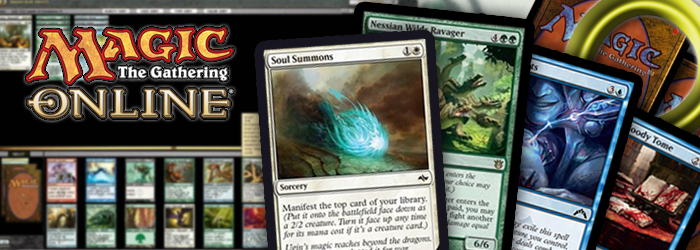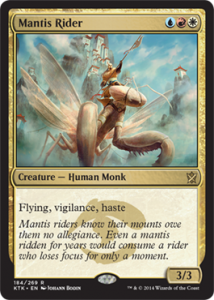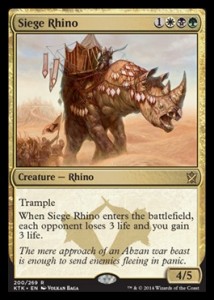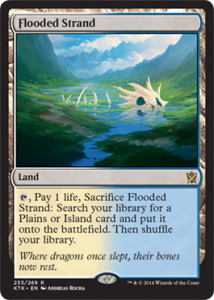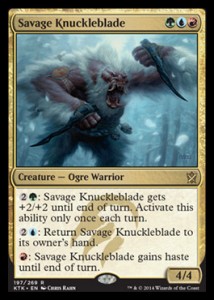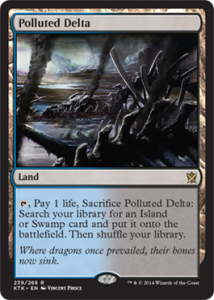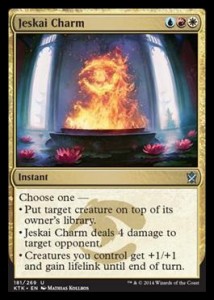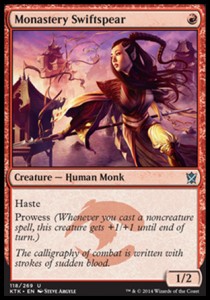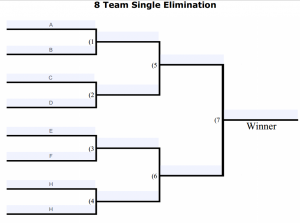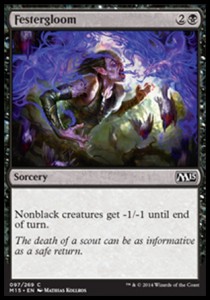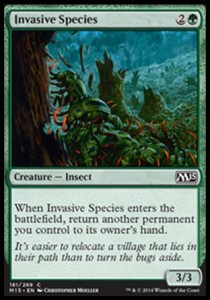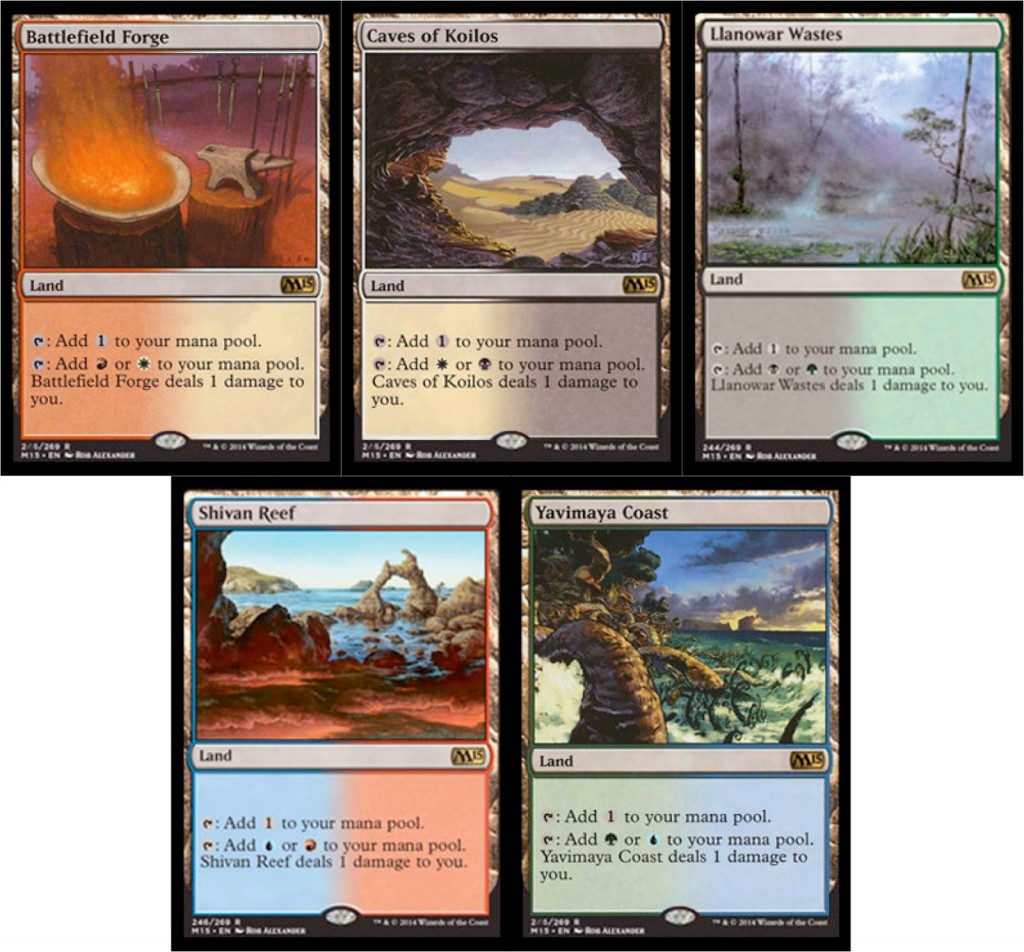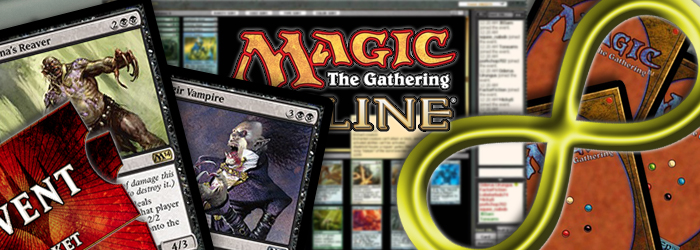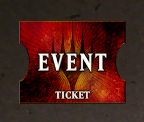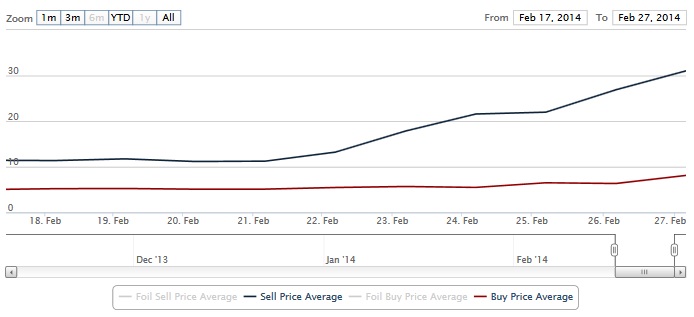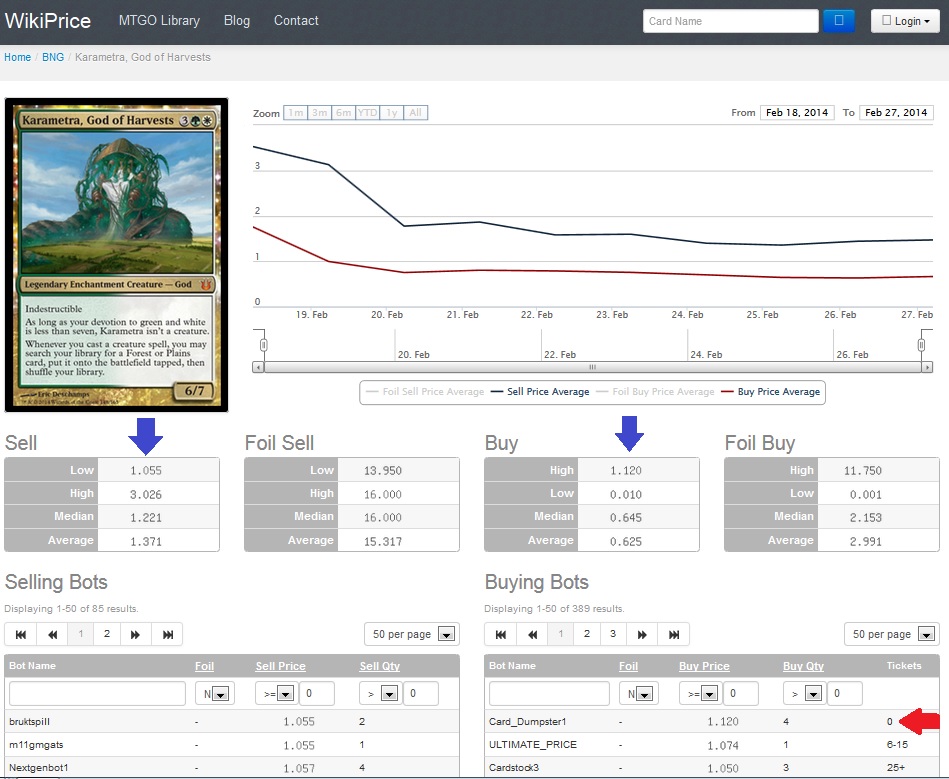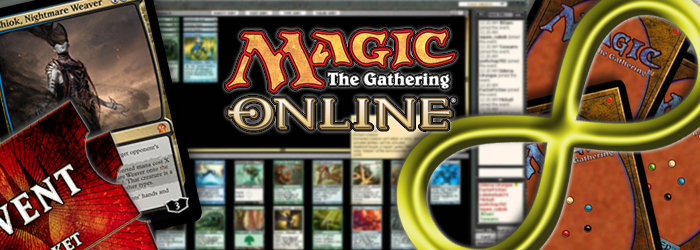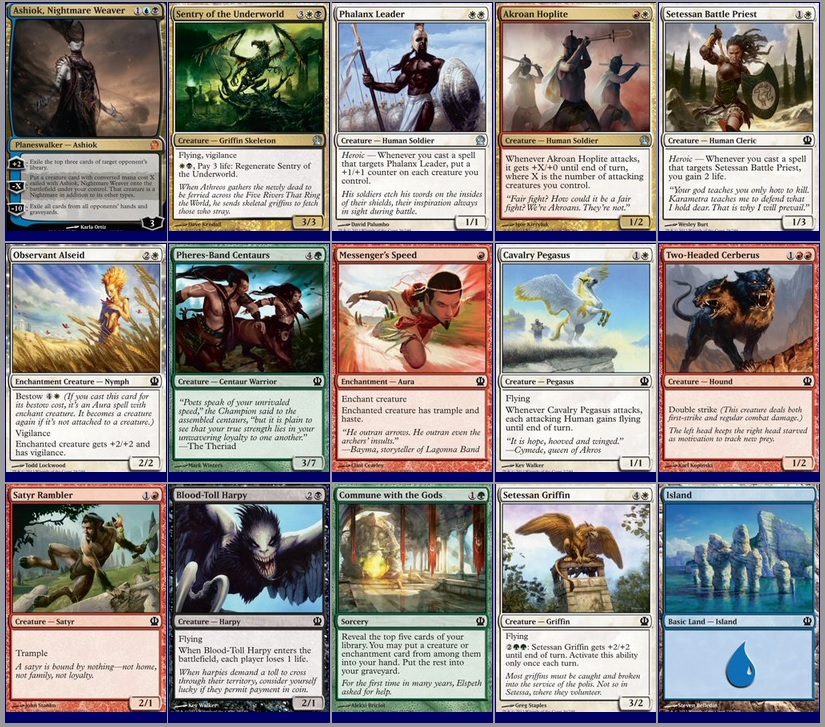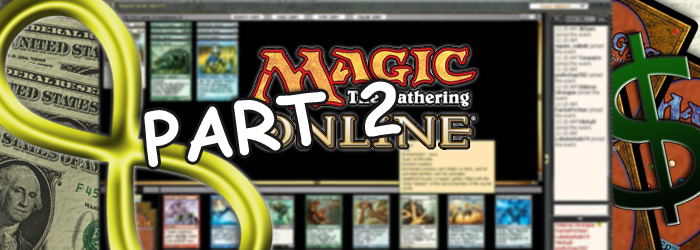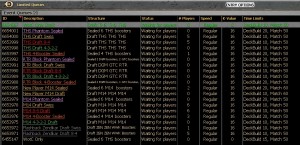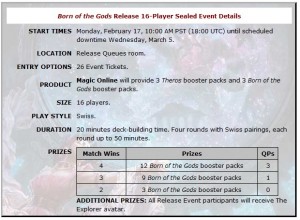Casually Infinite – Manifest and Other Troubled Mechanics of Magic‘s Past
I’ve kept no secret about the fact that I’m not impressed with manifest as a mechanic. To me, it fits in with a number of previous unimpressive “feel bad” mechanics. As a featured new keyword in a set, it has a number of issues similar to other troubled mechanics such as tribute, cipher, and curses. Here I’m going to go in depth to look at the repeated flaws of these mechanics to see what it is that drives these mechanics to look so good, but end up so unloved.
Manifesting Failure
For those not familiar with manifest, it is a mechanic that has you put the top card of your library onto the battlefield as a face-down 2/2 creature, similar to a morph. However, if the card is a creature card, it can be turned face up by paying its mana cost. If it’s not a creature card, it sits on the battlefield as a 2/2 for eternity. There are a number of instants and sorceries that manifest, as well as a few creatures and enchantments that attach to newly manifested creatures. Most of the time, manifest exists as a fairly priced 2/2 creature with fairly priced bonuses. The basic manifest card, [card]Soul Summons[/card], is basically a white bear with possible upside.
The problem is that the upside promises big things but the reality of it is incredibly small. In a regular Limited deck with 40 cards, 17 lands, 8 spells, and 15 creatures, you have only about a 37.5 percent chance of hitting a creature. This means you have a 62.5 percent chance of getting an unexciting manifest. About 20 percent of the time, your manifest will be an instant or sorcery that you probably wanted. Having my [card]Reach of Shadows[/card] manifested was one of the worst feel-bad moments in my entire time playing in the block so far. With the 37.5 percent chance of getting a creature, there’s a number of creatures that you don’t want manifested. When you look at cards like [card]Hooded Assassin[/card], [card]Aven Surveyor[/card], or even the famed [card]Siege Rhino[/card], manifesting these cards is mostly downside. Getting the “free card” doesn’t even matter because most of the time you spent a card to get the manifest. With a number of creatures that you don’t want manifested being a significant portion of your deck, it appears that the “good case” scenario is manifesting a land, which is great until it gets bounced.
I figure that less than 20 percent of most decks is made up of creatures you actually want to manifest. These include morphs and some big-mana creatures. In most of those cases, you’d rather cast the creature from your hand. Paying three for a morph is generally much better than paying 1W for a manifest that has a 20 percent chance of being a morph. Especially considering that there’s a 40 percent chance that I’ll manifest a card I actually want. The promise of manifesting my [card]Abzan Guide[/card] is dwarfed by the likelihood that I won’t and surpassed by the probability that I’ll manifest something I actively don’t want. In the end, this is a feel-bad mechanic in the vast majority of cases. So long as the cost is fair, I’d generally rather just have a 2/2 than a manifest.
Manifesting Success
While at it’s core I’d consider manifest a failure, there are a couple of examples where it is a decent success. Cards like [card]Lightform[/card] and [card]Mistform[/card] represent cards that I’m perfectly happy to play as a 2/2 with the attached abilities. If these cards were just 2/2s instead, they would still find a place in my deck. In these cases, manifest could be considered a success because it basically just gives a 2/2 token with the attached enchantment. This means that it’s a good deal. However, I’d consider the manifest as more of a downside than an upside. It has the downside of taking a card I actually want out of my deck. Even with a small downside like exiling the top card of my library, I’d still play Cloudform or Lightform, but it’s important to note that these cards generating an acceptable creature doesn’t make the mechanic good.
The cards that makes manifest shine are cards like [card]Whisperwood Elemental[/card] and [card]Mastery of the Unseen[/card]. These cards allow for continual manifesting, which drastically increases the chance of getting a good card while a card like [card]Soul Summons[/card] is more like a scratch-to-win lotto ticket. The eventual payoff of getting continual 2/2 creatures along with the chance to “strike it big” makes these cards far more exciting. However, these are the rare and mythic cards and most of the common cards are very unexciting.
The other issue here is there is incredibly few cards with a big payoff for manifesting. Manifesting [card]Master of Pearls[/card], [card]Icefeather Aven[/card], or [card]Hooded Hydra[/card] feels like winning the Mega Millions, but it is incredibly unlikely to happen. You’re more likely to feel awesome by morphing your [card]Icefeather Aven[/card] and flipping it up to bounce your opponent’s [card]Dragonbell Monk[/card] and block their [card]Battle Brawler[/card], which feels just as much like winning but can actually happen in a game of Limited Magic. All the cards that are great with manifest were already great. Manifesting them is good, but they’re not cards you’ll have lots of in your deck.
Feeling Bad About Mechanics
One of the biggest complaints stemming from manifest is that it is a “feel bad” mechanic. Reading the mechanic, your mind drifts to flipping up hydras or monks for two, but the reality isn’t the case. LSV recently commented that Soul Summons has basically become a bear. I might argue that it is possibly worse than a bear without some sort of scry or [card]Brainstorm[/card] mechanic. This means not only is the promise fulfilled less than desired, but the promise failing to be fulfilled leaves the player somewhat frustrated. If you hit a good spell or utility creature with an ETB effect, it feels pretty bad. At this point, not only is the promise of something cool not fulfilled, but you “lose a good card.” I understand that all you really lose is a random card off the top of your library, but the reality of the situation is that you have to continue to look at that Reach of Shadows or, God forbid, [card]Duneblast[/card], wishing there was a way to cast it. The promise of something good is simply too often eclipsed by something less than stellar or bad.
Tribute
There’s a recent string of similar mechanics in recent small sets that share a similar feel bad issue. Most recently Born of the Gods brought about the tribute mechanic. This mechanic provided the opportunity for the opponent to pick one of two “modes” upon the resolution of creature. Tribute, much like manifest, promised great things, but rarely delivered. There were rare occasions where your opponent would pick the wrong choice for tribute. Perhaps they were relying on their kill spell to take down the massive creature they just allowed you to land and you had a counter, or sometimes the board state just wasn’t what they thought it was. But the vast majority of the time, you got to read a card with two cool abilities and pick the worst one in your given situation. Again, some of these cards had modes that were very close, such that picking either one went pretty badly for your opponent. But even in those 55/45 situations, you were pretty much guaranteed to lose the 10 percent. Here, similar to manifest, there was a promise of big things with little delivery.
Cipher
Cipher was a very interesting Dimir mechanic in Return to Ravnica block that also brought with it big promise. Cipher allowed you to cast a spell, then attach it to a creature that would allow you to cast the spell for free every time you hit an opponent with it. The idea of getting to tap down two of your opponent’s creatures every turn with [card]Hidden Strings[/card] is quite a draw. If you could pair it up with a small unblockable creature, you could have quite an impact.
…Except that you already could get through with an unblocked attacker every turn, which makes tapping your opponent’s creatures down far less significant. Additionally, the cards were too expensive to be priced fairly for a single use, making it necessary to get in twice in order to make it “worth it.” Paying 3U to draw a card with [card]Last Thoughts[/card] is pretty unimpressive. Paying it to draw two cards makes it a sorcery speed [card]Inspiration[/card], which is still worse than [card]Divination[/card]. If you could get three cards out of it, you were doing pretty good. But considering the inherent risks of casting what is essentially an enchantment with an ETB ability that is significantly overpriced, most all of the cipher cards promised far more than they could deliver.
Curses
Curses are probably the most successful of the mechanics mentioned here as they still play a role in some decks. I still see [card]Curse of the Bloody Tome[/card] in mill decks and [card]Curse of the Stalked Prey[/card] had it’s day in the sun—or moonlight, perhaps.
Curses made big promises. The primary difference is the frequency with which they could actually deliver. Cheap or impactful curses just operated similarly to world enhancements when you could build your deck around them. The problem was that they were a mechanic of build-around-me cards. You couldn’t really build around curses, which meant that there were a large number of build-around-me cards in each set. Each of these promised big things which were, for the most part, attainable in the right deck, but very difficult to make proper use of. Of the mechanics listed, I wouldn’t mind curses coming back, but I think that they need to come in low enough numbers that they will really just operate like other build-around-me enchantments like [card]Angelic Accord[/card], [card]Quiet Contemplation[/card], or[card]Goblin Slide[/card].
Planning for the Future
It is my hope that in the future we see more mechanics where the big promises can be fulfilled rather than falling flat. Cards with monstrosity that were fair at their original cost could provide additional value if the game went long. My initial doubts about morph in Khans were mitigated by the five-mana cost to flip face up, and morph ended up being one of my favorite parts of the set.
While I expect to see individual cards that may not hit the mark, an entire mechanic that suffers from these problems can really drag a set down. With mechanics like tribute and manifest, there is no way that they won’t be a let down the majority of times they show up, so I hope they do not return. Give me more mechanics like prowess, outlast, dash, raid, and delve, and I’ll be a happy man.

